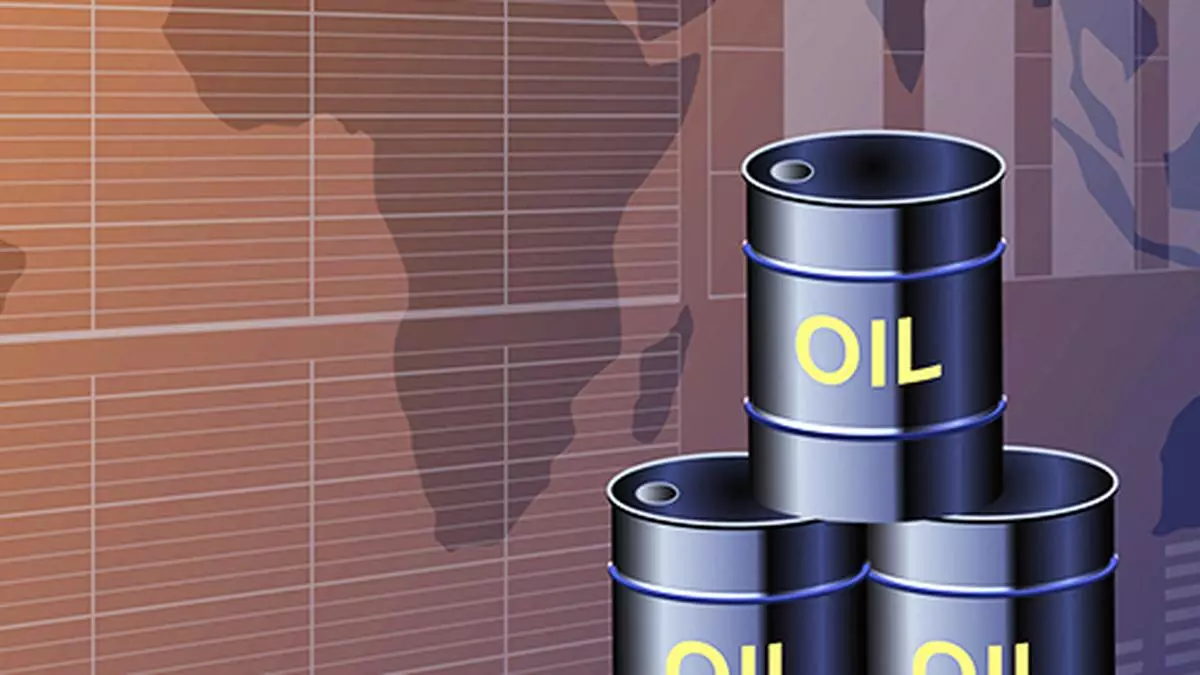Crude oil futures traded higher on Monday morning after the US President, Donald Trump, imposed tariffs on Canada, Mexico and China, which will come into effect on February 4.
At 9.56 am on Monday, April Brent oil futures were at $76.25, up by 0.77 per cent, and March crude oil futures on WTI (West Texas Intermediate) were at $73.84, up by 1.81 per cent.
February crude oil futures were trading at ₹6447 on Multi Commodity Exchange (MCX) during the initial hour of trading on Monday against the previous close of ₹6350, up by 1.53 per cent, and March futures were trading at ₹6397 against the previous close of ₹6304, up by 1.48 per cent.
In three executive orders on Saturday, Trump imposed 25 per cent tariffs on imports from Canada and Mexico, and 10 per cent on imports from China. These tariffs will come into effect on February 4. However, he imposed 10 per cent tariff on energy imports from Canada, and 25 per cent on energy imports from Mexico.
In reply to these tariffs, Canada and Mexico said they would impose similar tariffs on imports from the US. China said it will approach the World Trade Organisation.
In their Commodities Feed for Monday, Warren Patterson, Head of Commodities Strategy of ING Think, and Ewa Manthey, Commodities Strategist, said Canada is a key supplier of crude oil to the US, with the US importing around 4 million barrels a day from Canada (61 per cent of total imports).
This crude oil is a heavier crude, which many US refineries are configured to run on, particularly in the Mid-West. Given the importance of Canadian oil to the US, it is not surprising to see that WTI is trading stronger on Monday morning, they said.
In theory, tariffs mean higher feedstock prices for US refiners (which will ultimately be passed onto consumers). However, the full cost of the tariff is unlikely to be picked up by US refiners/consumers.
Stating that 97 per cent of Canadian oil exports went to the US in 2023, they said: “Given that Canada has very few alternatives for where to export its crude oil, we are likely to see West Canada Select prices fall, which will see its differential to WTI widen. If Canada had a more sizeable export infrastructure allowing it to export to other external markets, Canadian oil producers would feel less pain from these tariffs.”
There is 890,000 barrels a day of pipeline capacity (Trans Mountain pipeline) from Alberta to the West Coast of Canada, allowing Canadian crude to be exported to other markets, they said, adding: “We are likely to see more of this pipeline capacity used once tariffs are imposed. However, supply from Alberta still far exceeds the capacity of this pipeline, so we will continue to see the bulk of Canadian crude going to the US.”
Ultimately, given that Canadian producers have fewer alternatives than US refiners, means Canadian oil producers are likely to feel relatively more pain from these tariffs, they said in the Commodities Feed.
More broadly, an escalation in trade tensions is not supportive for risk assets with it souring sentiment and raising concerns over the impact it could have on global growth, which means the strength in crude oil prices may be short-lived. The strength in the US dollar will also likely provide some headwinds not just for oil but the broader commodities complex, they added.
February natural gas futures were trading at ₹290.20 on MCX during the initial hour of trading on Monday against the previous close of ₹267.30, up by 8.57 per cent.
On the National Commodities and Derivatives Exchange (NCDEX), February kapas contracts were trading at ₹1464 in the initial hour of trading on Monday against the previous close of ₹1408, up by 3.98 per cent.
February castorseed futures were trading at ₹6387 on NCDEX in the initial hour of trading on Monday against the previous close of ₹6360, up by 0.42 per cent.
–EOM–
